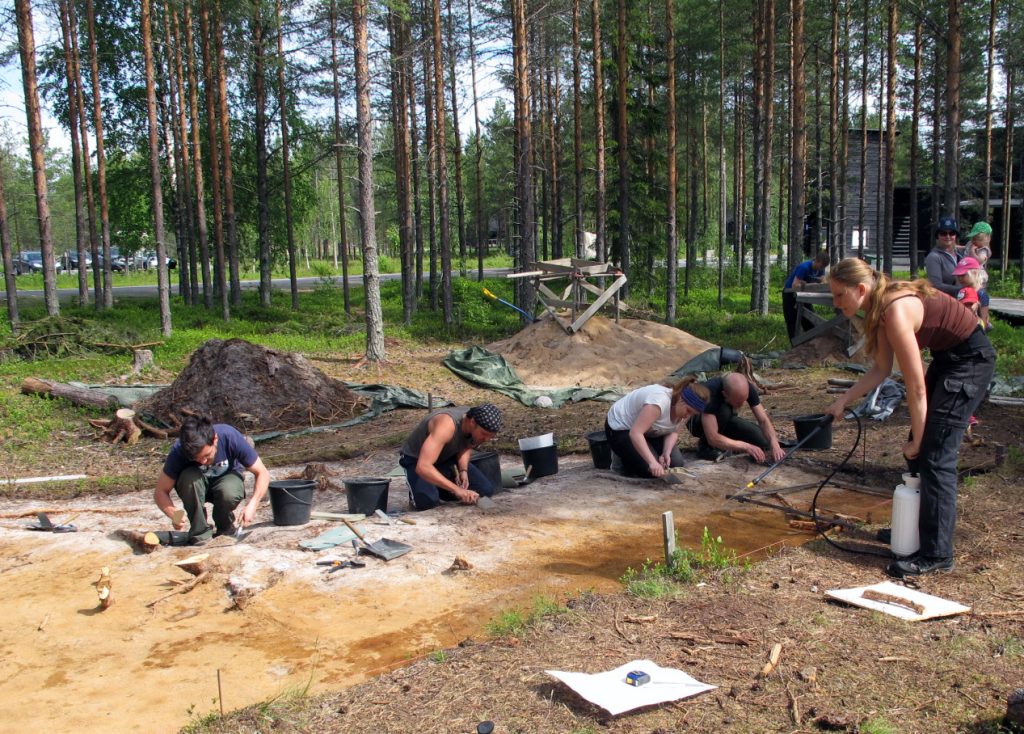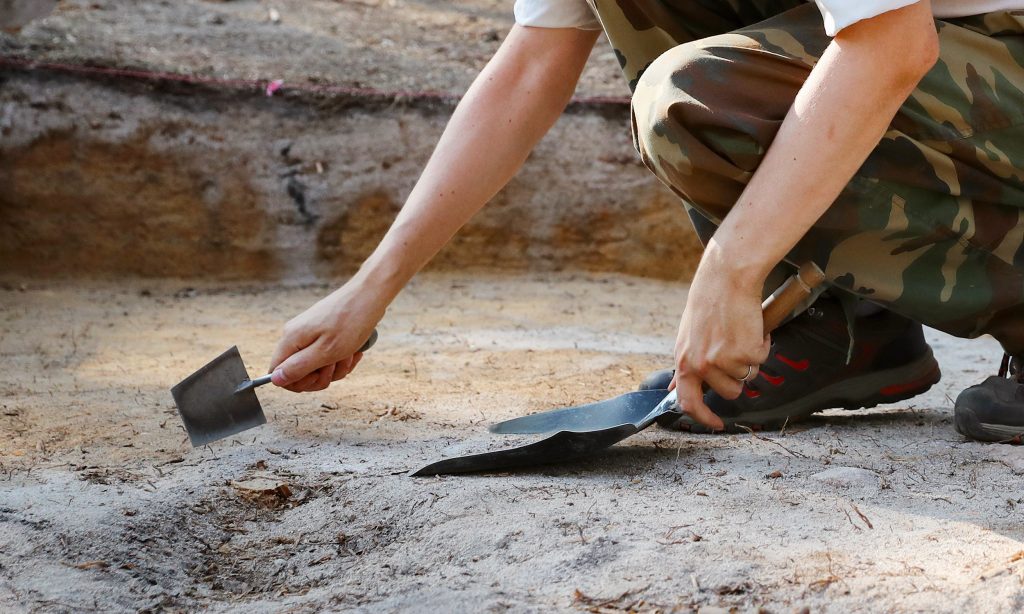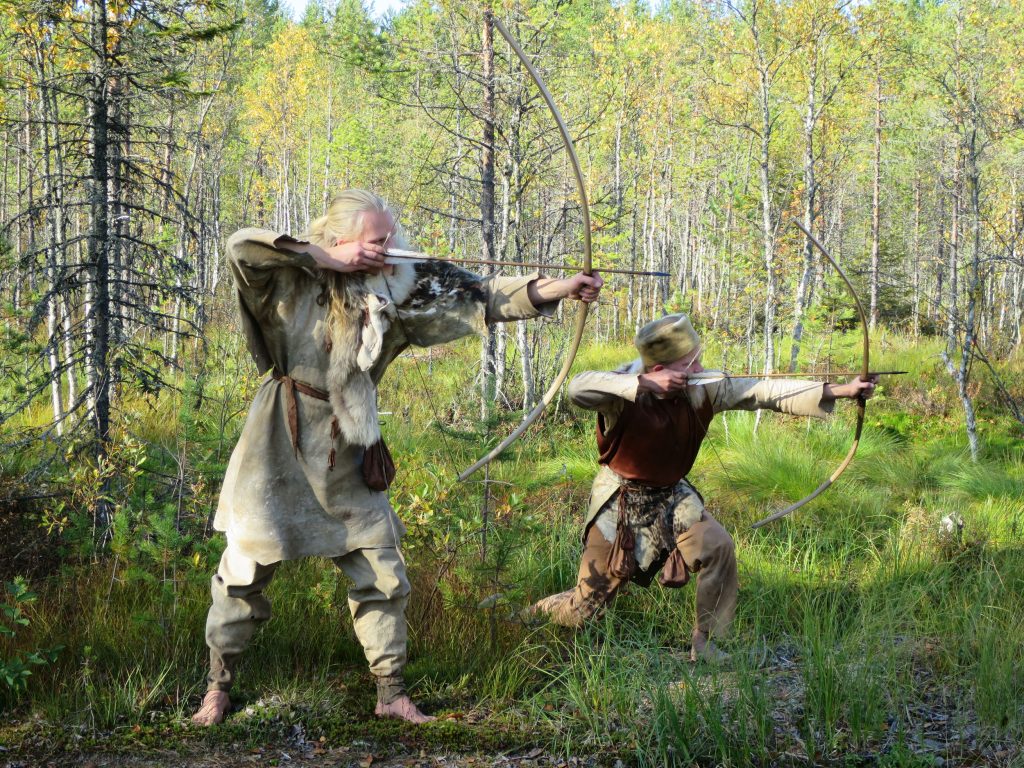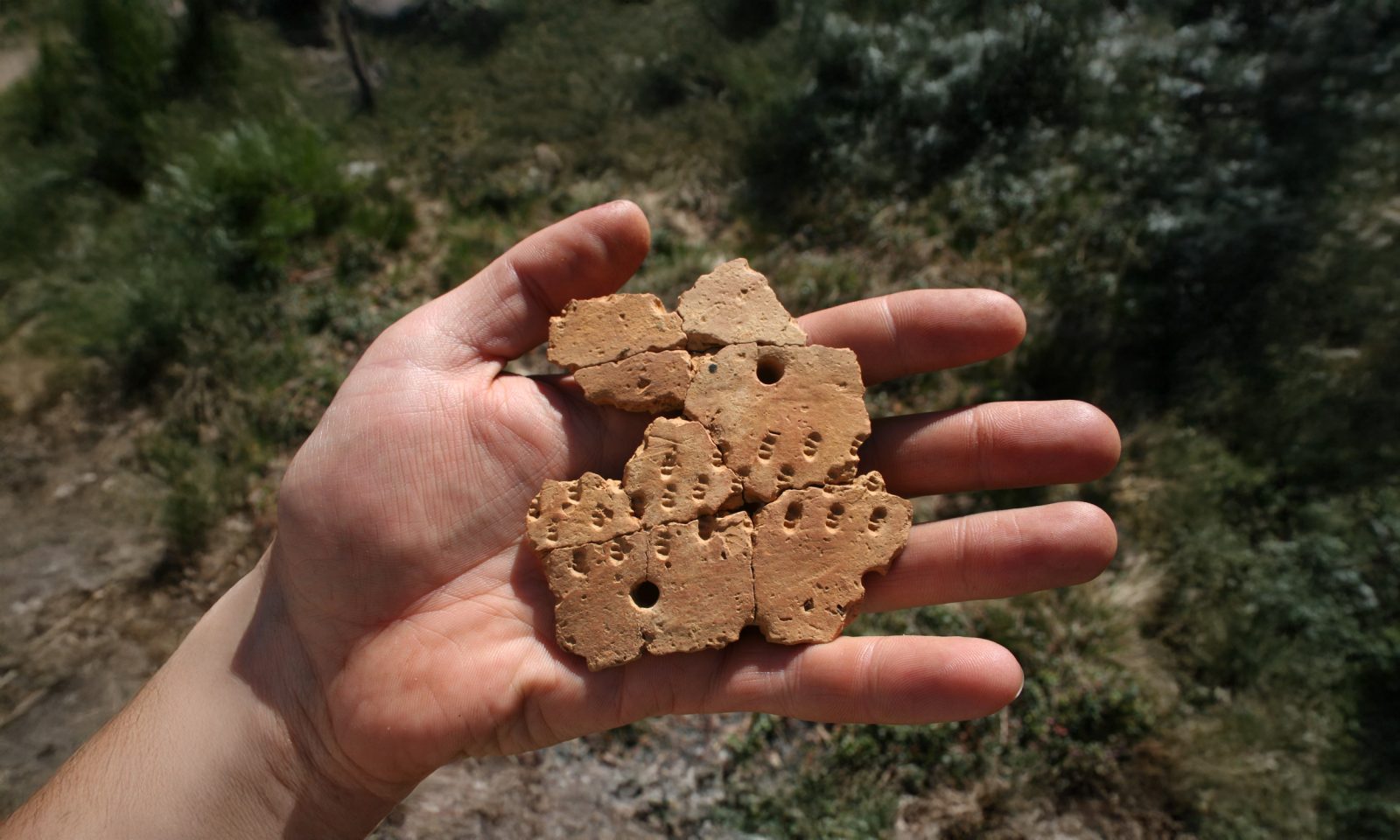There was flourishing village culture in Kierikki in approximately 5000–3000 BCE. The remains of Stone Age villages of different ages form a series of settlements in the area, spanning over two thousand years.
The first known mention of the ancient structures found in Kierikki was made in the 1800s. After the Iijoki River’s power station construction started in 1960, thousands of Stone Age objects were discovered in the region’s archeological sites.

In the 1990s, Kierikki was re-examined more extensively. During the research, dozens of formerly unknown dwelling depressions – i.e. evidence of the Stone Age house structures – were located and wooden fishing equipment, dating back to the Stone Age, was discovered from the Purkajasuo Bog. Archaeological excavations and data gathering have been continuing up until recent years.
The finest objects and artifacts of the excavations are on display in the archaeological exhibition in Kierikki.

Researching the Stone Age
How is the Stone Age researched? What are the specific characteristics and what information can be obtained? What are the interpretations based on?
Read more
Kierikki in the Stone Age
During the Stone Age, Kierikki was home to a populous, year-round community of villagers who traded and carried out extensive building projects.
Read more